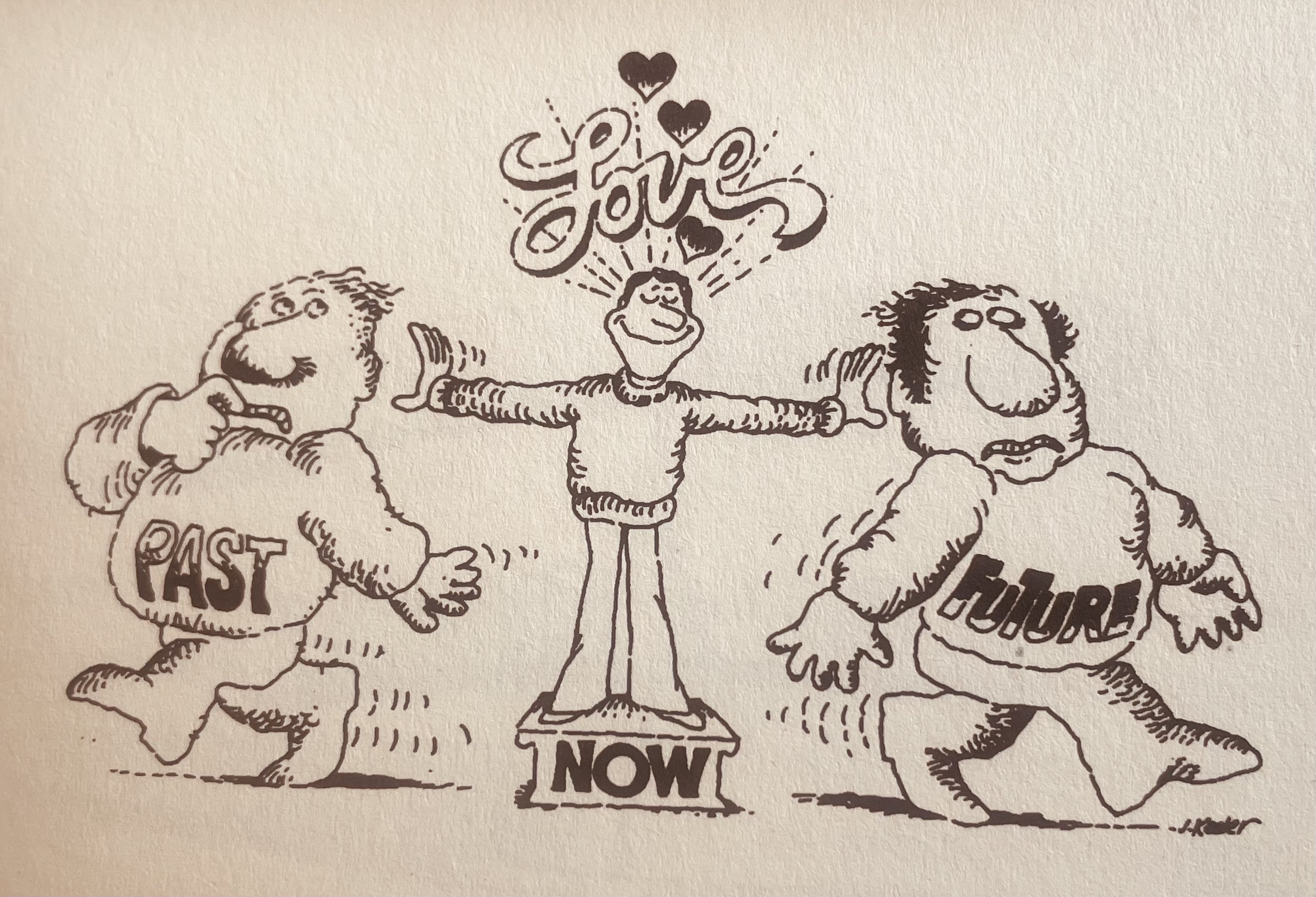A lot is said in mindfulness circles about living in the present moment. I think the concept could use some consideration and exploration.
Sometimes I notice when I’m doing something that isn’t engaging me in the way I think it should be, or that I would like it to, that I’m distracted, day dreaming. It’s good that I’m noticing right? I’m recognising that my immediate presence is being crowded out by random memories, thoughts, flotsam and jetsam. And, I feel a little guilty.
Warts and all
I’m not sure that’s helpful. The guilt I mean. Being distracted, daydreaming is part of being human. If it’s happening, it’s happening. That’s all there is to it. Our life happens in the present moment. We really can’t be anywhere else. So what is it that we’re trying to achieve in mindfulness?
I do notice a very great tendency that when I’m experiencing discomfort or distress, I don’t want to be with it. They are the moments I want to race ahead, be somewhere else, some future moment, maybe the past, anywhere else will do. I believe, more than anything else in mindfulness, we’re trying to cultivate an open, receptive attitude to our experience. No matter what it is. Warts and all. To not abandon ourselves. And, that takes practice!
Taking in the good
I’ve been doing some study with Rick Hanson, who (amongst many others) recognises that our brain has a negativity bias. You’ve probably heard this before, how in-our-pre-historic-times-it-was-important-to-be-alert-to-risks-as-they-could-potentially-mean-becoming-a-non-human-animal’s-lunch,-but-there-aren’t-so-many-saber-tooth-tigers-in-our-neighborhoods-these-days,-and-yet-we-still-have-that-hard-wiring. The thing that is a little different about Rick Hanson (and he’s not entirely on his own here either) is that he has developed strategies to deliberately work with this negativity bias. So that when this inbuilt alarm system goes off there’s lots of things that we can do. We can add an extra step after noticing it. Pause. And then, apply wise effort to help enhance our sense of wellbeing and harmony.
An example of such a strategy is to take time to cultivate ‘good’ feelings. Deliberately bringing to mind pleasant memories and really steeping in the embodied feeling of them as our present moment experience. These can then be called to mind at will to be experienced alongside challenging thought processes or threatening situations to help us from tipping into habitual negative thought processes, continual scanning for threats and becoming overwhelmed. He calls this, ‘taking in the good’. It’s not getting rid of challenging mind stuff, and, it is more than simply noticing it.
Cultivate particular strengths
He’s quite specific about the sorts of thing to bring to mind, acknowledging that there are different types of ‘good’ feelings we can cultivate for our differing experiences of distress or discomfort. We may have particular strengths that we need to grow to provide the antidotes for the particular distress we are experiencing. For example, gratitude is particularly useful as a support when we’re feeling dissatisfied, but less useful as a support for anxiety, which is more about the need for safety.
Skillfully responding
I reckon that responding skillfully to our present moment experience is what it’s all about. We’ve got a lot of control over our relationship with our present moment experience, even when we have little control over what we’re experiencing. We can direct and guide our attention in healthy ways and minimise distress.
I’ve learnt in my meditation training that all experiences, emotions, thoughts and sensations are messengers. They always have information for us and therefore should not be ignored. I unequivocally believe this. There is a question though, that has emerged for me lately, which is, “ how long do I need to listen?” Especially when there is no new information. Like that wordless voice that pops up consistently reminding me that I’m not good enough and that maybe there’s something wrong with me. “Yeah, I’ve heard it all before”.
Listen first
The very first thing I must do though, is listen. Not try to outrun the unwanted thing or cover it over with niceties and platitudes or distract myself. I’ve got to slow down, hear the message, sometimes without understanding it, but at least giving it enough space to be seen and heard. Then I can respond, rather than slipping into my habitual responses, which, while they might have been useful once, may no longer be fit for purpose. Allow a bit of a pause to break the chain between the past and the future and be open to the unlimited possibilities that might arise in that space.
Being in the present moment isn’t important
I’m being bold enough to suggest that it’s actually not so important to be in the present moment, because we’ve got no choice about that anyway. Rather, what’s really important is how I respond to my present moment experience. How well I’m listening. How closely I can stay connected to my integrity, my authenticity and honour my experience. And then, how skillfully I respond to keep myself in harmony. Remembering that as my teacher Richard Miller says “harmony isn’t always comfortable”.

